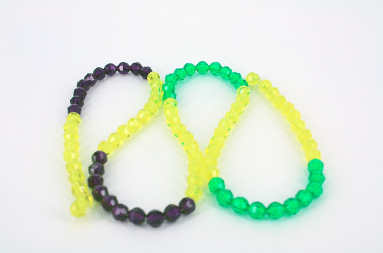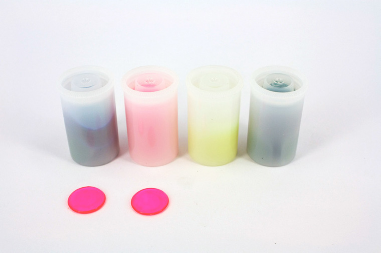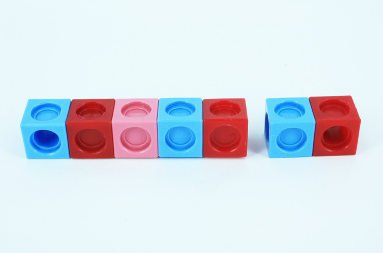Diagnostic questions
There are eight beans under this card and five beans under this card. How many beans are there altogether?
What to notice in the student’s response
Does the student use their fingers to count on the next five, starting with 8 as the first number in the count, for example, “8, 9, 10, 11, 12”?
Deliberate acts of teaching
Materials
- Counters, blocks, interlocking cubes
- Listening tin with one tens frame on the back and one on the front
- Magnets
Students who have learned to trust the count but are unable to keep the first set separate in their heads when counting on the second set, need to develop an efficient system for keeping track of the second number. The following activities will assist the student to count on from a number. Use plenty of examples to build confidence.
Drop count: Ask the student to close their eyes. Tell them a number and ask them to hold it in their head and to listen as a number of counters/magnets are dropped into a container. For example, “Hold the number 7 in your head. I am going to drop five more into the container. How many do we have in the container right now?” (7). “We have 7, now count on as I drop the counters/magnets in.” The student should hold the 7 and begin counting from 8 (7 … 8, 9, 10, 11, 12).
Listening tin: Place 7 magnets on the tens frame on the back of the tin. Show the pattern to the student and ask them how they know that it is 7. Turn the tin around. Tell the student to hold the 7 in their head and to count on four more. Have magnets ready to fill the tens frame as the student counts on.
Cube count: Place five numeracy cubes on the tips of your fingers and show the student a container. Say “There are eight cubes in the container, and we are going to count on five. How many are in the container right now?” (8). “Eight is the starting number. Count on as I drop the five cubes in the container.” The student should respond, “… 8 … 9, 10, 11, 12, 13.”
What to do next if the student is stuck
Check whether the student can tell you what is one more or one less, what is two more or two less, for numbers up to 20. If the student struggles with the concept of one more or one less, use a number strip and transparent counters to solve problems. Refer to The Number Strip in Book 5: Teaching Addition, Subtraction, and Place Value.
Initiating home-based activities
Encourage parents to ask the student to count up to five more numbers, forwards and backwards, for numbers from 6 to 19.
Next teaching steps back in the classroom
Continue to reinforce starting points for counting, increasing the size of the numbers by using teen numbers.



